Presentation:
56 y/o male presented with right sided posterior shoulder pain of 5 weeks duration. The character of the pain is a constant deep dull ache with occasional pinching/sharp pain with certain movements.
He first noticed the pain after hitting a number of backhand shots while playing tennis with his son which he had not done in years. He did not think anything of it and simply applied deep heat and a heat pack to the area that night. The pain subsided until 4 days later when he was baby sitting his 2 y/o granddaughter. He felt the sharp pain return after repetitively lifting her up and playing with her on the floor.
This has now formed a pattern so that each time he babysits, the shoulder gets irritated for 1-2 days and then settles again.
He explains he has had shoulder issues in the past – old football injuries and overuse injuries as a builder but never looked into treatment or assessing what was wrong.
At the moment the shoulder is keeping him up at night with a throbbing sensation and he is finding it difficult to sleep on his right side.
He denies any neck pain or back pain.
He has seen his general practitioner (GP) who referred him for an MRI and prescribed the use of heat therapy and Mobic.
Imaging Report:
Partial thickness along the bursal involving the inferior supraspinatus tissue fibres and superior infraspinatus tissue fibres.
Patient is recommended for CT guided cortisone injection.
Examination:
Observation; patient was holding the shoulder in an elevated position.
Cervical range of motion; Flexion = 35 deg. Extension = 30 deg. Right rotation = 70 deg. Left rotation = 75 deg. Right lateral flexion = 15 – 20 deg. Left lateral flexion = 15 – 20 deg.
Neurological examination; unremarkable. Reflexes intact bilaterally.
Left Shoulder range of motion; NAD – full and pain free.
Right Shoulder range of motion; Flexion = 140 deg. Extension = 45 deg. Abduction = 120 deg. Horizontal Adduction = 30 deg. Internal Rotation = 45 deg. External Rotation = 40 deg.
Shoulder depression test; negative
Jobe’s Sign – Supraspinatus; positive
Resisted infraspinatus activation; positive
Hornblower’s Test; negative
Belly Press Test; negative
Bear Hug Test; negative
O’Briens Test – Labral; negative
Load and Shift Test; positive
Treatment:
Education & Advice.
Myofascial Therapy
Active release of the infraspinatus and supraspinatus muscle fibres
Dry needling at the infraspinatus and supraspinatus tendons (grade 3 needling)
Traction and circumduction mobilisations
Kinesiology taping
Scapular stability retraining and rehabilitation
Home Exercise:
Ice therapy
Traction and circumduction mobilisations
Glenohumeral mobility and stability training
Outcome:
After 4 consultations by the end of week 2, the patient showed a 50% mobility improvement.
After 8 consultations by the end of week 4, the patient reported no throbbing sensation or pain while sleeping.
After 12 consultations by the end of week 8, the patient showed unrestricted mobility but noticed the dull ache returned slightly after 3 days of babysitting again.
After 20 consultations by the end of week 36, the patient continues to show unrestricted mobility and is pain free with resisted muscle testing. He has returned to playing tennis on a fortnightly basis with his son.


Comments are closed.